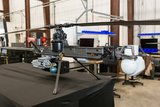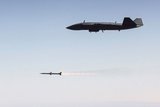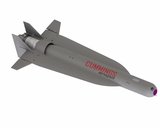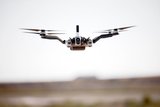UV Europe 2011: RAF considers Reaper future beyond ARC
The UK Royal Air Force (RAF) is considering options to fill a potential capability gap beyond the projected out-of-service date of 2015 for its fleet of MQ-9 Reaper UAVs, a senior service official has revealed.
Referring to the forthcoming initial operational capability of 2018 for the UK's Scavenger MALE UAV programme, Wg Cdr Gary Coleman, SO1 ISTAR Land HQ 2Gp, described how the RAF was 'looking at options of how to fill the gap at the moment'. In May, the Ministry of Defence said the move would extend the operational capability of the Reaper urgent operational requirement (UOR) until 2015 at least.
'I think the date 2015 is probably set for troop reductions [in Afghanistan] but I think we'll still be supporting Afghan National Security Forces with the Reaper as a UOR beyond that,' Coleman stated. He also described how Reaper currently covered some 80 per cent of Scavenger requirements and highlighted other potential candidates including Predator C, Talarion and Taranis. The UK and France are also considering a joint approach which could also satisfy Scavenger requirements.
Coleman also confirmed that the RAF was still planning on procuring the Additional Reaper Capability (ARC), comprising an additional five aircraft by the middle of 2012. This, he added, would provide the RAF with a capability to fly three orbits on a 24/7 basis with the use of 44 crews.
The ARC, worth an increased investment of some £135 million, coincides with the reconfiguration of 13 Squadron as a second Reaper unit.
Describing the Reaper UAV as a vital part of the RAF's existing force mix, Coleman said: 'The manned and unmanned force mix is the way we are going to go in the future. But it will not replace the GR4 [Tornado] or Joint Strike Fighter. It's niche capability is endurance and the manned and unmanned force mix.'
Having flown a total of 22,000 hours in Afghanistan between October 2007 and May this year, Coleman said 39 Squadron Reaper aircraft were flying approximately 1,000 hours of ISR missions a month. In total, the aircraft have launched over 160 munitions including AGM-114 Hellfires and GBU-12 laser guided bombs.
However, he added that the RAF was 'possibly identifying a requirement in the future for an even smaller yield munition than Hellfire' for close air support fire missions in complex urban environments.
'There is a clear demand for low yield weapons which may have enabled kinetic options against non-prosecutable targets,' he admitted while describing how three Hellfire munitions were typically fired for every GBU-12 laser guided bomb. Currently, RAF Reapers carry four Hellfires and two GBU-12 bombs on mission in Afghanistan, at operational altitudes of 30,000 ft and providing some 12 hours of endurance.
More from Uncrewed Vehicles
-
![What's next for the Pentagon after the Replicator programme?]()
What's next for the Pentagon after the Replicator programme?
Although the Replicator initiative has made several accomplishments, there are still multiple gaps to plug across the US Department of Defense (DoD) and its services.
-
![Cummings Aerospace showcases Hellhound loitering munition designed for US Army’s LASSO programme (video)]()
Cummings Aerospace showcases Hellhound loitering munition designed for US Army’s LASSO programme (video)
Cummings Aerospace presented its turbojet-powered Hellhound loitering munition at SOF Week 2025, offering a man-portable solution aligned with the US Army’s LASSO requirements.
-
![SOF Week 2025: PDW unveils attritable FPV drone for SOF operations at scale]()
SOF Week 2025: PDW unveils attritable FPV drone for SOF operations at scale
PDW has revealed its Attritable Multirotor First Person View drone at SOF Week 2025, offering special operations forces a low-cost, rapidly deployable platform for strike and ISR missions, inspired by battlefield lessons from Ukraine.
-
![SOF Week 2025: Teledyne FLIR white paper provides guidance on reusable loitering munitions]()
SOF Week 2025: Teledyne FLIR white paper provides guidance on reusable loitering munitions
Teledyne FLIR is highlighting the emerging requirements for 'recoverable and re-usable' loitering munitions across the contemporary operating environment during this week’s SOF Week conference in Tampa, Florida.
-
![SOF Week 2025: Kraken Technology group debuts K3 Scout USV in North America]()
SOF Week 2025: Kraken Technology group debuts K3 Scout USV in North America
High-performance maritime industry player Kraken Technology Group, based in the UK, has used the SOF Week conference in Tampa, Florida this week to debut its K3 Scout uncrewed surface vessel (USV) to the North American market.
-
![Palladyne AI and Red Cat to demonstrate capabilities for autonomous drone swarms to the US military]()
Palladyne AI and Red Cat to demonstrate capabilities for autonomous drone swarms to the US military
Red Cat and Palladyne AI recently conducted a cross-platform collaborative flight involving three diverse heterogeneous drones.

























